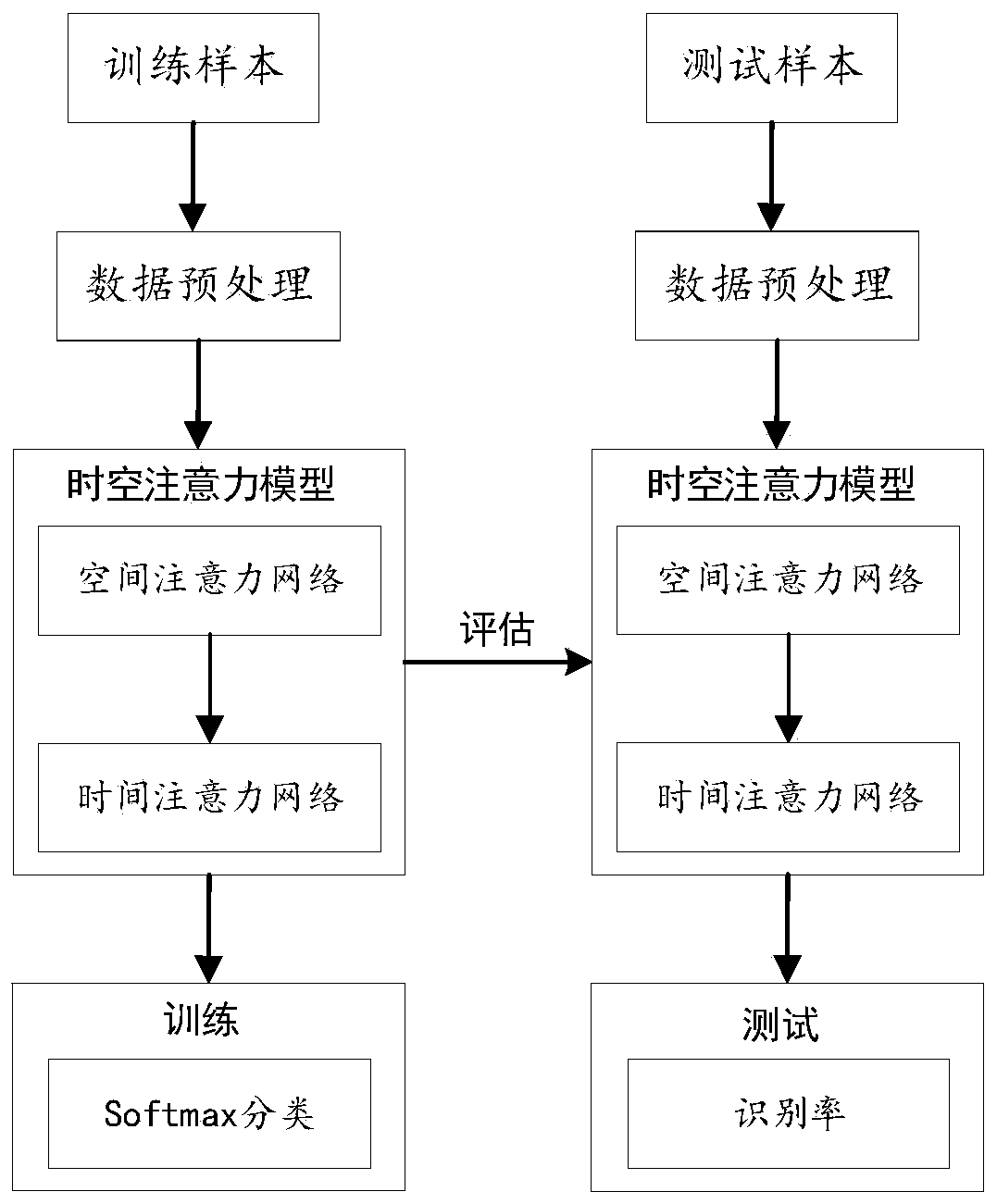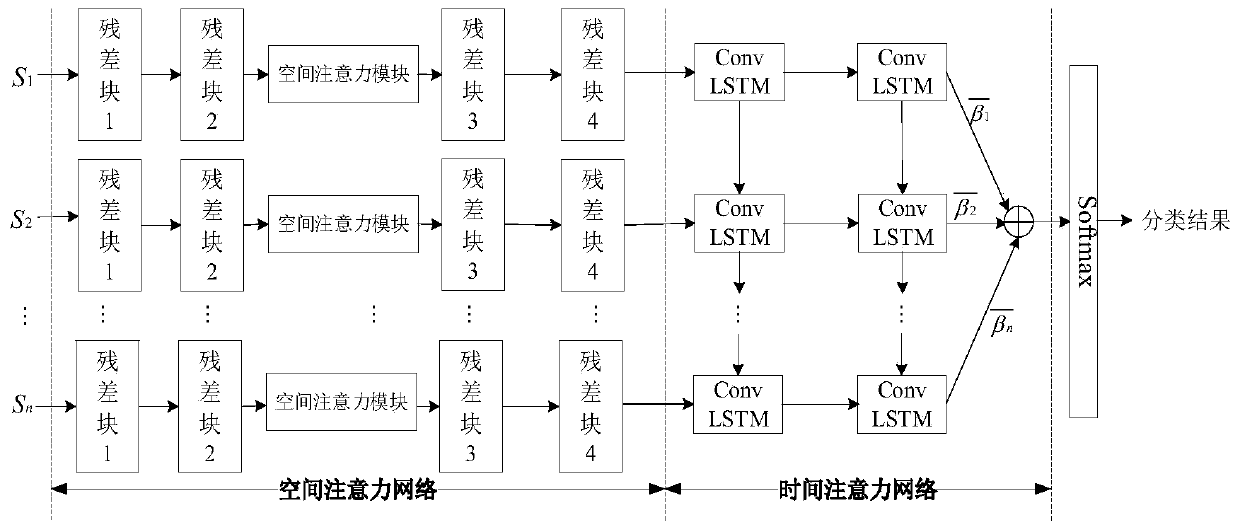Sign language recognition method based on space-time attention mechanism
A recognition method and attention technology, applied in character and pattern recognition, computer parts, instruments, etc., can solve problems such as lack of effectiveness, inability to highlight temporal differences, and weak temporal and spatial correlations.
- Summary
- Abstract
- Description
- Claims
- Application Information
AI Technical Summary
Problems solved by technology
Method used
Image
Examples
Embodiment Construction
[0051] The technical solutions in the embodiments of the present invention will be described clearly and in detail below with reference to the drawings in the embodiments of the present invention. The described embodiments are only some of the embodiments of the invention.
[0052] The technical scheme that the present invention solves the problems of the technologies described above is:
[0053] Such as figure 1 Shown, a kind of sign language recognition method based on space-time attention mechanism, it comprises the following steps:
[0054] S1, data preprocessing. Each sign language video is sampled into 32 frames; for videos with a frame number greater than 32, the redundant frames are evenly distributed to both ends for deletion, and the key frames in the middle are retained; for videos with a frame number less than 32, in order to ensure the timing of the data , repeat the last frame. And normalize the image scale of the sampled pictures, and uniformly cut them into...
PUM
 Login to View More
Login to View More Abstract
Description
Claims
Application Information
 Login to View More
Login to View More - R&D
- Intellectual Property
- Life Sciences
- Materials
- Tech Scout
- Unparalleled Data Quality
- Higher Quality Content
- 60% Fewer Hallucinations
Browse by: Latest US Patents, China's latest patents, Technical Efficacy Thesaurus, Application Domain, Technology Topic, Popular Technical Reports.
© 2025 PatSnap. All rights reserved.Legal|Privacy policy|Modern Slavery Act Transparency Statement|Sitemap|About US| Contact US: help@patsnap.com



